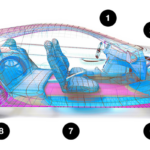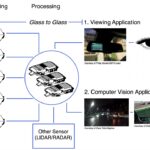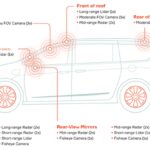 u-blox has announced the NEO-M9V global navigation satellite system (GNSS) receiver. The first u-blox positioning receiver to offer both untethered dead reckoning (UDR) and automotive dead reckoning (ADR), NEO-M9V is a perfect fit for fleet management and micro mobility applications that require reliable meter-level positioning accuracy even in challenging GNSS signal environments such as urban canyons.
u-blox has announced the NEO-M9V global navigation satellite system (GNSS) receiver. The first u-blox positioning receiver to offer both untethered dead reckoning (UDR) and automotive dead reckoning (ADR), NEO-M9V is a perfect fit for fleet management and micro mobility applications that require reliable meter-level positioning accuracy even in challenging GNSS signal environments such as urban canyons.
Vehicle fleet managers seeking to cut costs and lower their carbon footprint depend on accurate positioning and navigation data to reduce fuel consumption. Additionally, accurate odometry data is key to fleet managers for billing and compliance.
Micro mobility operators need to accurately locate their devices to service the individual bikes and scooters, as locating vehicles on the wrong side of a street can force drivers to make long detours to reach their intended destination, incurring additional cost, lower service quality, and polluting the air. Accurate positioning is also vital to geofence their operation in compliance with local regulations.
Using inertial sensor measurements, UDR offers a smooth navigation experience in dense urban environments by bridging gaps in GNSS signal coverage and mitigating the impact of multipath effects caused by GNSS signals that bounce off buildings. ADR further increases positioning accuracy in demanding environments by including the vehicle speed into the sensor fusion algorithm.
Offering both UDR and ADR on the same module delivers maximum positioning performance and design flexibility at once, allowing our customers to provide the best solution case-by-case to each of their end customers.
NEO-M9V also features dynamic models optimized for both cars and e-scooters. By adapting the algorithms of the dead reckoning solution to the behavior of these use cases, these dynamic models further increase the quality of the position reading.
NEO-M9V is based on the u-blox M9 GNSS technology platform. Its ability to track up to four GNSS constellations maximizes the number of GNSS satellites within its line of sight at any given moment. Integrated SAW and LNA filters offer excellent interference mitigation for a robust solution, accelerating product design and shortening time to market. And compatibility with the popular NEO form factor reduces migration efforts for customers upgrading existing designs.
First samples of the NEO-M9V will be available soon.






Leave a Reply